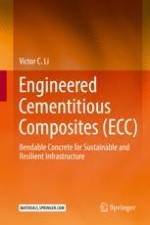2019 | OriginalPaper | Buchkapitel
2. Micromechanics and Engineered Cementitious Composites (ECC) Design Basis
verfasst von : Victor C. Li
Erschienen in: Engineered Cementitious Composites (ECC)
Verlag: Springer Berlin Heidelberg
Aktivieren Sie unsere intelligente Suche, um passende Fachinhalte oder Patente zu finden.
Wählen Sie Textabschnitte aus um mit Künstlicher Intelligenz passenden Patente zu finden. powered by
Markieren Sie Textabschnitte, um KI-gestützt weitere passende Inhalte zu finden. powered by
